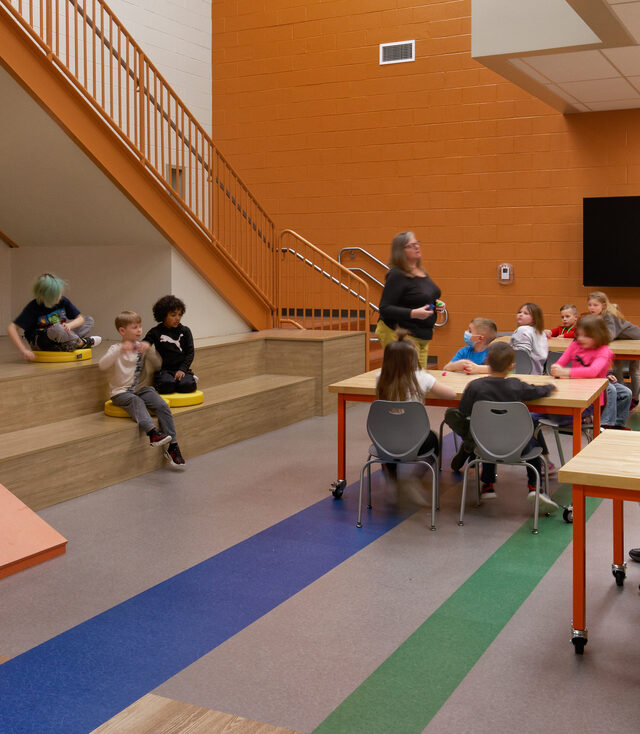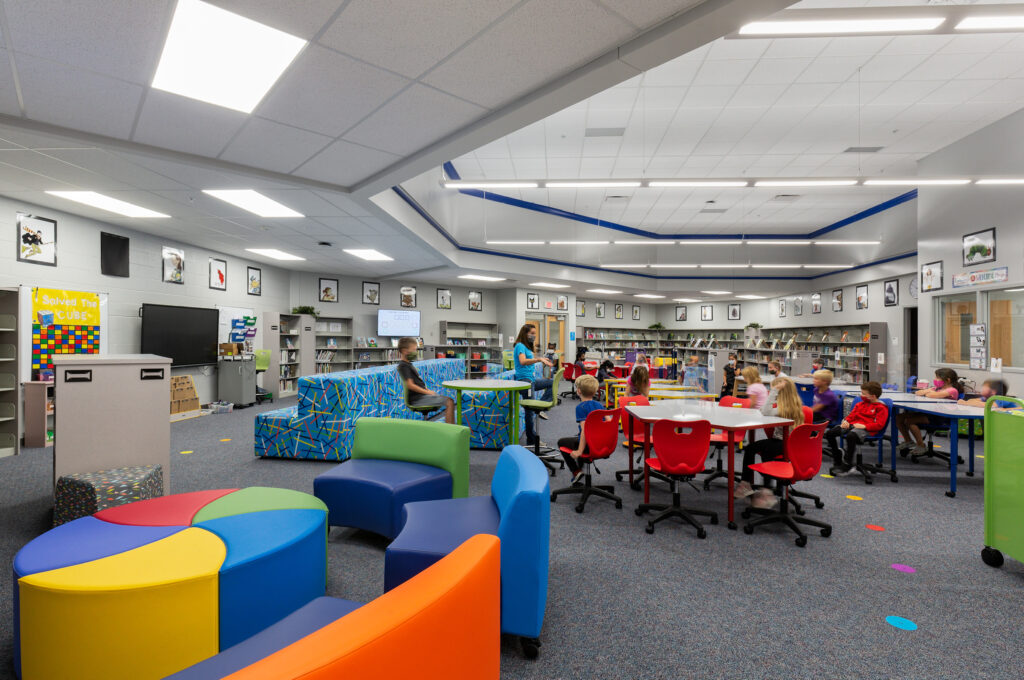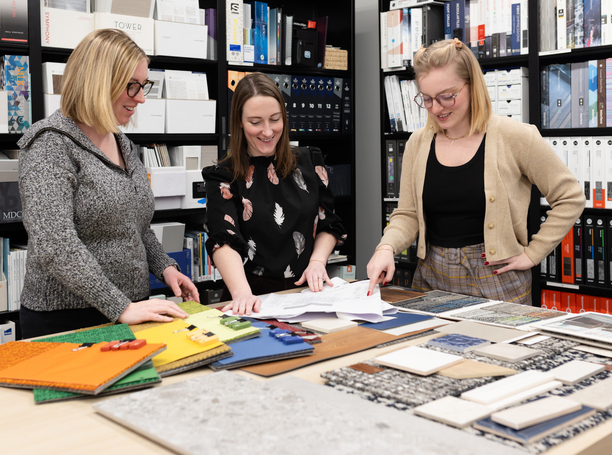Insights
The Psychology of Interior Design: Creating Spaces That Shape Learning
By Morgan Hemmings
When people think about school design, their minds often go to the big moves – gymnasiums, auditoriums, state-of-the-art labs. But to me, some of the most powerful transformations happen in the spaces in between.
Interior design isn’t just furniture and finishes. It’s the feeling you get when you walk into a space. Are you calm? Focused? Inspired? In school, that emotional response can shape a student’s entire day, and that’s where the psychology of interior design comes in.
Design for Real Impact
My passion for educational design started early. I loved learning growing up—still do—but I also recognize that not every student shares that feeling. That’s why my design approach always begins with empathy. I want to design for a student’s best day, but also for the tough ones.
The goal is to create environments that reduce stress, support a variety of learning styles, and make all students feel like they belong.
At Fanning Howey, we take time to listen. Through workshops, interviews, and discovery sessions, we learn how students, teachers, and administrators experience their space—and how we can improve it. Every material choice, lighting fixture, and floorplan is intentional. Whether we’re creating sensory-friendly zones for younger learners or designing collaborative spaces for high school students, we’re focused on environments that promote equity, inclusivity, and wellness.
Designing for neurodiversity is especially important. Features like acoustic control, natural light, and visual organization aren’t just aesthetic decisions—they’re strategies that help students with ADHD, anxiety, or sensory sensitivities stay engaged and feel at ease.
Design for the Student Voice
When I look at the future of school design, I see more flexibility, more daylight, and more student voice. We’re moving away from rigid layouts and toward spaces that reflect real-world environments. That means zones for choice—soft seating, writable walls, quiet corners, and media centers that act as community hubs.

Sustainability and storytelling are rising priorities as well. Today’s students are incredibly perceptive. They want to understand the “why” behind design choices, and they want buildings that reflect their culture and community. Sometimes, we embed playful “Easter eggs” in our designs—subtle nods to school identity or local history. It’s a fun way to keep students engaged and give each school a unique personality.

Whether I’m helping a teammate design their first auditorium or sketching out ideas for a new CTE wing, I believe that sharing knowledge makes all of us stronger. Interior design is a team effort, and the more we learn from each other, the better outcomes we create for the communities we serve.
Design as a Team
One of the things I value most about Fanning Howey is our culture of collaboration and mentorship. I’m constantly learning from our senior team, and I enjoy paying that forward by supporting new designers – especially when it comes to designing schools. These spaces may not always seem glamorous from the outside, but the impact they have is profound.
Design for the Next Generation
To students considering a career in interior design, especially in education: know that your work can make a real difference. Your design choices have the power to improve test scores, boost well-being for students and staff, and reduce absenteeism. The right environment can transform how someone feels about learning, which is an incredible responsibility, and an even greater opportunity to make a meaningful impact.
If I could give one piece of advice, it would be this: Stay curious. Ask questions. And always think about how people will feel in the space you create. When you design for education, you’re not just shaping a building, you’re shaping the experience of an entire generation.
At Fanning Howey, we design with purpose and with people in mind.
If you’re a student interested in educational interiors or a school leader envisioning the future of your learning environments, I’d love to connect. Let’s talk about how design psychology can shape the spaces where learning truly happens.
Explore more insights from our designers or connect with us to learn how design psychology can shape your next project.
Creating Ideal Montessori School Environments: A Guide for Architects and Educators
By Carla RemenschneiderMontessori schools are designed to foster independent learning, exploration and creativity in children. As an architecture, interiors and engineering firm, Fanning Howey understands the importance of designing physical spaces that support these principles. By thoughtfully
Full ArticleDesigning School-Based Health Centers
By Dan ObrynbaSchool-based health centers are becoming integral components of public schools, primarily serving the needs of students and staff, with the potential to also serve the broader community. School-Based Health Centers are usually run by separate
Full ArticleSmart Schools Roundtable: School Safety by Design
By Zachary SprungerThe tragedy at Robb Elementary School in Uvalde, Texas, has once again brought the issue of school security into the national conversation. In 2020, Fanning Howey hosted a school security webinar featuring Michael Dorn, Executive
Full Article